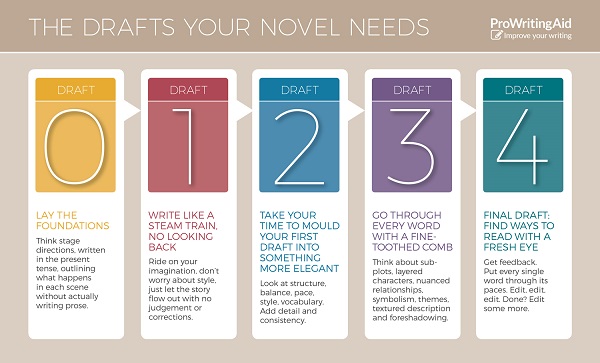
Below are the blog posts that most resonated with you this year. Did your favorite make it on the list?
- How Literary Devices Can Add Depth to Your Writing
- 2017 Content Marketing Trends You Need to Know
- How to Foreshadow like Alfred Hitchcock
- The Drafts Your Novel Needs (and Why You Probably Won't Use a Single Word of Your First Draft!)
- How to Create Your Story's World
- The Geek Writer: Using Technology to Self-Publish Your Novel
- Are Your Adjectives Powerful?
- 6 Tried and Tested Methods for Writing a Novel
- How to Construct a 3D Main Character
- Cut "That" Out—Seriously
How Literary Devices Can Add Depth to Your Writing
The term “literary device” refers to some common techniques that writers use to add meaning to their writing and get their message across more poignantly. When mastered, literary devices can help your reader interpret your scenes and understand your ideas with greater depth.
There are hundreds of literary devices to choose from, but let’s talk about some of the ones that will add layers to your writing.
2017 Content Marketing Trends You Need to Know
The good news for copywriters is that content is still king. The bad news is that only the really good stuff will sell. In the past, the low barrier to entry for copywriters created a glut of writers hanging out their shingles. Companies are now beginning to realize, however, that all content is not created equal. Their audience is tired of the hype and the fluff. Readers expect value in exchange for their time spent reading your content. If they don’t find value, they’ll turn elsewhere.
We’ve pulled together a few predictions on trends that will rule content in 2017.
How to Foreshadow like Alfred Hitchcock
Foreshadowing is a literary device that allows you to plant clues, hint at what’s to come, build the tension, or even place a red herring in your reader’s path.
You can use foreshadowing in a variety of ways. The resulting action can be immediate or delayed. You can use dialogue or narrative to set the scene, and you can foreshadow a symbolic event or an ethical dilemma. You can use direct or indirect foreshadowing, and it can even be true or false.
The Drafts Your Novel Needs (and Why You Probably Won't Use a Single Word of Your First Draft!)
The way Katja L. Kaine drafts is an extension of the way she approaches novel planning as a whole - which is to start with a simple concept and then add more and more detail until she has a fairly comprehensive outline.
In this incredibly useful and practical article, Katja shares her objectives and priorities for each draft, how she prepares for each draft, and the techniques she uses to get each draft written.


How to Create Your Story's World
No matter what genre you write in, you need to build a world for your story. If you’re writing a current-day story, you should know where the story is set and what’s happening in the world around your main characters. If you’re writing science fiction or supernatural stories, world building is extremely important. The more fantastical your setting, the more time you’ll need to spend developing it.
The Geek Writer: Using Technology to Self-Publish Your Novel
After a painstaking process of planning, writing, and editing your work, it’s time to consider publishing it. Back before we tech-savvy geeky writers existed, self-publishing was considered vain and a bit silly, and your work wasn’t taken seriously. David Wong, with his novel, John Dies at the End, broke that stereotype of the self-published novelist, and here we are. Now, traditional publishers are nervous (and rightly so) due to the wonderful world of technology.
Are Your Adjectives Powerful?
There is always a temptation for inexperienced writers to try boost their weak adjective by adding "very". Don't do it! Whenever you want to write "very", stop and think if there is a strong adjective that would be more effective.
But...there are exceptions to every rule!
6 Tried and Tested Methods for Writing a Novel
In this post, Kathy Edens introduces us to six of the most popular novel-writing methods out there: 1) The Snowflake Method, 2) The 30-Day Method, 3) The 5-Step Method, 4) The Write From The Middle Method, 5) The 5-Draft Method, 6) The Novel Factory Method. The best method is the one that speaks to you. It’s the one that you’ll commit to and use to start writing your novel. But more importantly, it’s the one that will help see you through to the end.
How to Construct a 3D Main Character
Have you ever read something and about 50 pages into it, you’re just not feeling the main character? You’re either not invested in her conflict or she’s kind of … boring. Now think about the latest book you couldn’t put down. You could hardly wait to find out what happened to the MC. You just “got” her; she was relatable and you understood why she did the things she did.
She was obviously a three-dimensional MC. But what are the three dimensions?
Cut "That" Out—Seriously
You want clear, concise writing, so make every word count. Cut out extraneous words, especially “that,” taking up space without adding value. This practical post is full of examples where the word "that" could be cut, and other times when it should be included for clarity.





.png)




